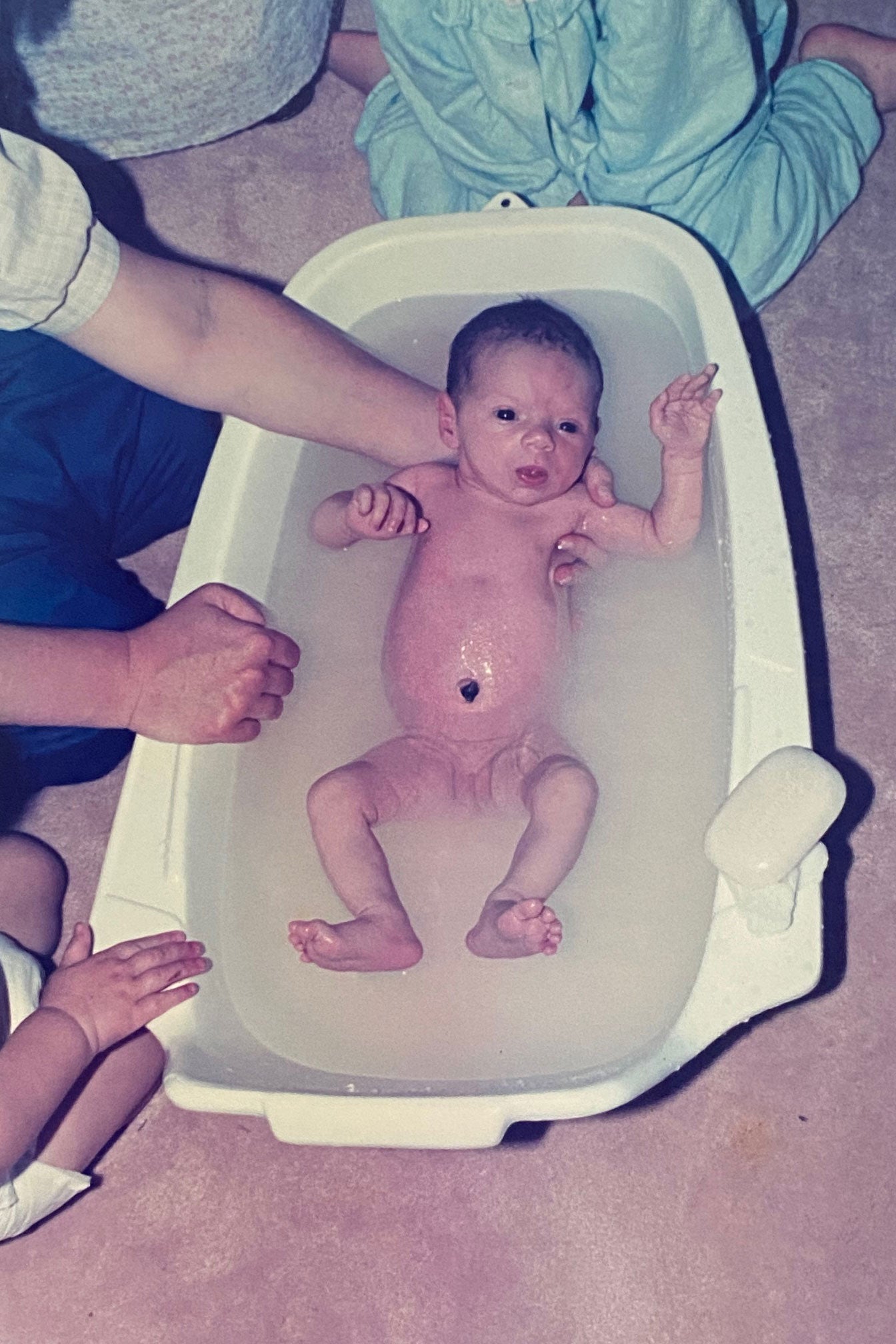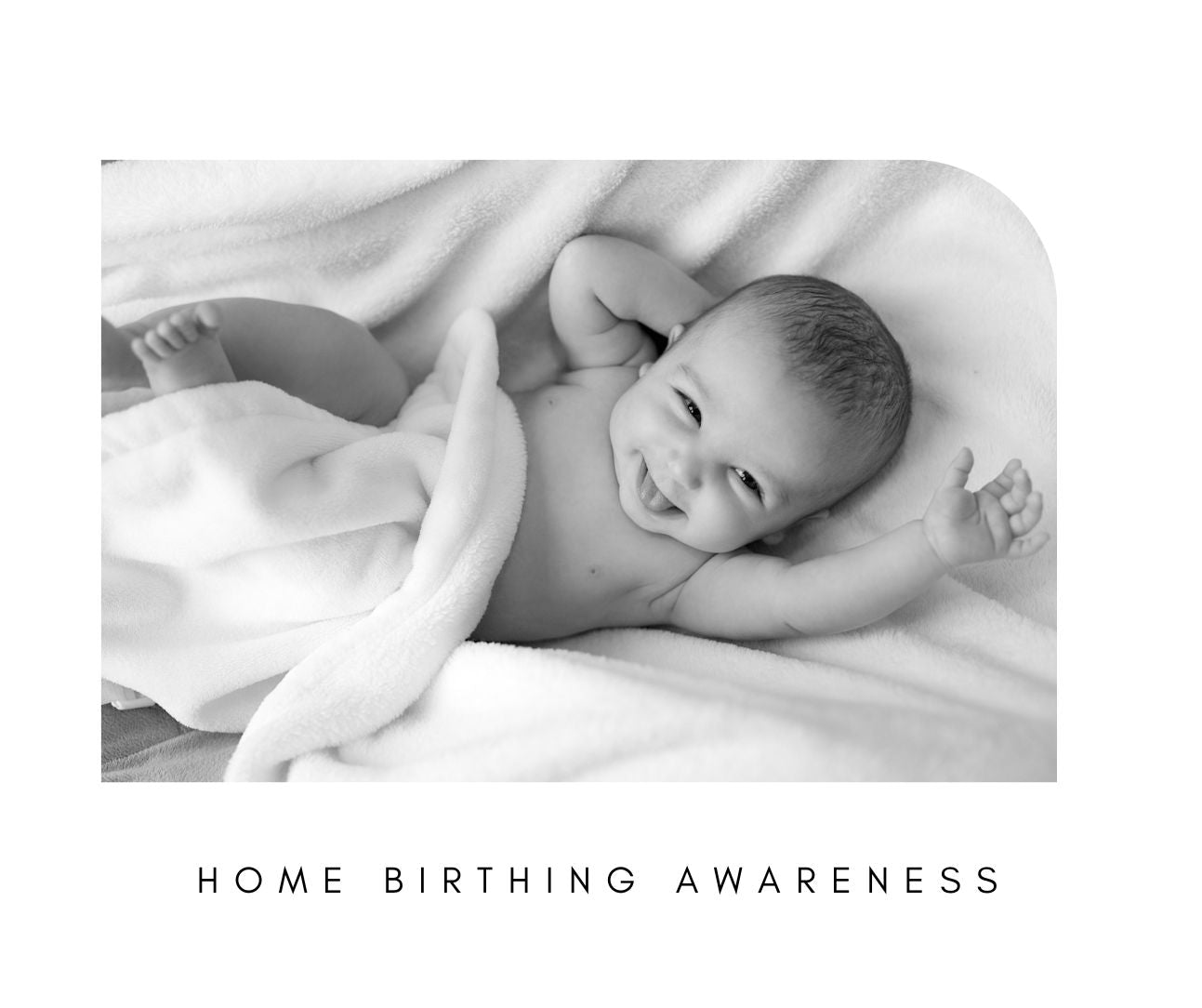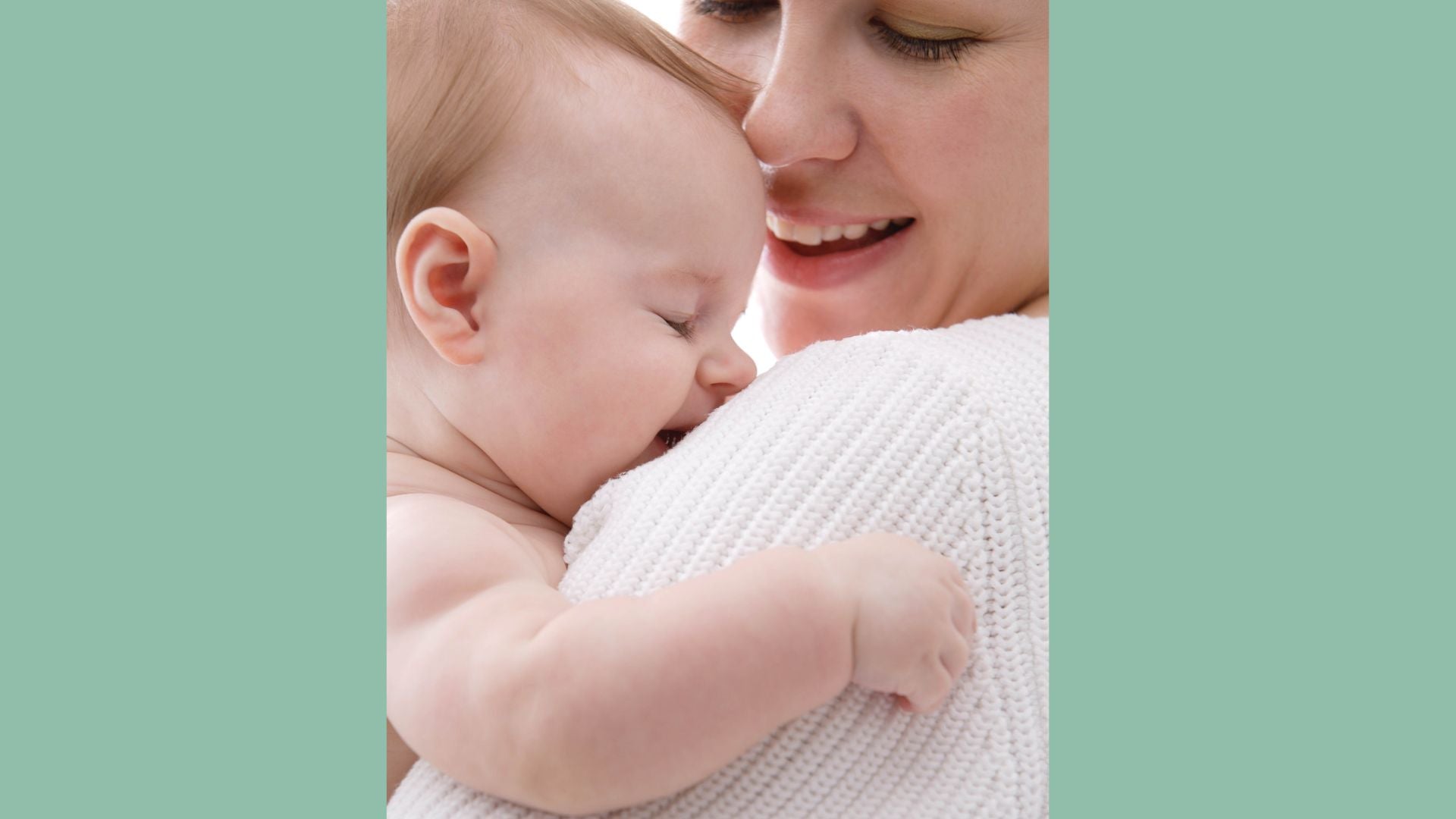Bathing Your Baby

Bathing Your Baby
Bathing your baby can be a fun and bonding experience for both you and your little one. However, it's also important to make sure that bath time is safe and comfortable for your baby. In this guide, we'll cover some tips on how to properly bathe your baby.
When Should You Start Bathing Your Baby?
You should start bathing your baby once their umbilical cord has fallen off and the wound has fully healed. This usually happens within the first few weeks after birth. Before then, you can clean your baby with a sponge bath.
How Often Should You Bathe Your Baby?
Newborn babies only need to be bathed around two or three times a week as they generally don't get dirty as often as we adults tend to. As your baby grows, you can begin to increase the frequency to three or four times a week.
Where Should You Bathe Your Baby?
You can either use a baby bathtub or simply fill up the sink or a regular bathtub with a few inches of warm water. Make sure the temperature is around 37 degrees Celsius (98.6 degrees Fahrenheit), but more on that later.
How Much Water Should You Use?
For newborns, only fill the tub with about two to three inches of water. As your baby gets older and starts sitting up on their own, you can increase the depth to four to five inches.
Tips for Bathing Your Baby
- Always be vigilant and never leave your baby unattended in the bath, even for just a few seconds.
- Have all of your supplies, such as baby soap, washcloths, and towels, within arm's reach before starting the bath.
- Use mild and gentle products specially formulated for babies to avoid irritation or allergic reactions.
- Start by washing your baby's face with a damp cloth and then work your way down their body.
- Pay special attention to cleaning the folds in your baby's neck, arms, legs, and diaper area.
- Rinse your baby with clean water after washing off any soap residue.
- Avoid using oils in your baby's bath as it can make them slippery and increase the risk of accidents.
- Always test the water temperature before placing your baby in the tub.
- After bathing, dry your baby off quickly and thoroughly, especially in their neck folds, to avoid any irritation or rashes.
- Don't forget to enjoy this special bonding time with your little one! Bathing can be a fun and calming experience for both you and your baby. So go ahead and splish splash with your little one, creating happy memories together.
What If Your Baby Doesn't Like Bath Time?
Some babies may not enjoy bath time at first. Make sure the room is warm enough and try singing or talking softly to soothe them. You can also try using a bath support or chair to help them feel more secure. If all else fails, don't worry! It may take some time for your baby to get used to baths, and it's completely normal for them to cry during the first few times.
Bath Time Safety Precautions
Ensuring safety during bath time is of paramount importance. Always keep one hand on your baby while they are in the bath to prevent them from slipping under the water. Babies can drown in as little as an inch of water, so constant supervision is a must. Make sure the bath area is free from objects that could potentially harm your baby such as sharp razors or slippery soap bars. Also, be mindful of the water temperature. Test the water with your wrist or elbow to ensure it's not too hot before placing your baby in the bath. Remember to use tear-free shampoos and soaps to protect your baby's eyes during the bath. Lastly, after the bath, wrap your baby in a soft, warm towel to prevent them from getting cold.
The Benefits of Baby Massage During Bath Time
Integrating a baby massage into bath time routine can significantly enhance your baby's overall well-being. Firstly, it can strengthen the bond between you and your baby as it is a great way to communicate and express love. Additionally, baby massage can promote better sleep. The gentle, rhythmic strokes can soothe your little one, making them more likely to have a peaceful night's sleep.
Further, baby massage also aids in digestion. Lightly rubbing the baby's belly can help alleviate any discomfort from gas or constipation. It's also beneficial for their muscle development and motor skills. The massage stimulates the baby's nervous system and increases blood flow, promoting healthier growth. To top it off, the skin-on-skin contact during a massage can stimulate the production of the 'love hormone' oxytocin in both you and your baby, enhancing feelings of attachment and security. So, incorporating a massage into bath time results in not only a clean, but also a relaxed and happy baby.
The Importance of Water Temperature during Bath Time
Paying close attention to the water temperature during your baby's bath time is crucial to ensure their comfort and safety. A temperature that is too hot can cause scalds or burns, while water that is too cold can lead to discomfort and chill. The ideal bath water temperature for babies is typically around 37-38 degrees Celsius (about body temperature). This temperature ensures that your baby is comfortable and can enjoy the bath without any distress. A good way to gauge this is by using your elbow or wrist to test the water as these areas are more sensitive to heat than your hand. Furthermore, it's recommended to constantly check the water temperature throughout the bath, as water can cool down quickly. Always remember, the goal of bath time is to create a soothing experience for your baby, and maintaining the right water temperature is a significant part of that.
The Importance of Tummy Time
Tummy time is an important part of your baby's overall development and can be incorporated into bath time for an enriching experience. Bathing your baby on their tummy can help strengthen their neck, shoulder, and arm muscles, which are key to meeting physical milestones such as rolling over, sitting up, and crawling. More than just a physical activity, tummy time during bath also supports cognitive development as your baby explores the world from a new perspective. Remember to always keep your hands on your baby during this activity to ensure their safety. The water should be shallow, and you should never leave your baby unattended. Integrating tummy time into your bathing routine can make bath time more than just a cleansing activity, adding an element of fun and learning to the routine.
How to Keep Your Baby's Skin Moisturized Post Bath
After bathing, it is crucial to keep your baby's skin moisturized to prevent dryness and irritation. Here are some helpful tips:
- Pat, Don’t Rub: When drying off your baby after bath, gently pat their skin dry rather than rubbing. This helps to minimize any potential for skin irritation.
- Use a Hypoallergenic, Fragrance-free Moisturizer: Immediately after patting your baby dry, apply a hypoallergenic, fragrance-free moisturizer. It's essential to apply the moisturizer while the skin is still damp to lock in the moisture.
- Choose the Right Baby Bath Products: Always use baby bath products that are mild and gentle on the skin. Look out for products specifically formulated for babies, as these are typically less likely to strip the skin of its natural oils.
- Humidify: Consider using a humidifier in the room where your baby sleeps. This can help keep their skin from drying out, especially during colder months when indoor air tends to be dry.
- Stay Hydrated: Lastly, remember that hydration also comes from within. If your baby is old enough, make sure they are drinking enough water throughout the day. For younger babies, ensure they are getting enough breastmilk or formula.
Remember, every baby is different, and what works for one might not work for another. It's always best to consult with a paediatrician if you have any concerns about your baby's skin health.
Tips for Washing Your Baby's Hair
Washing your baby's hair can be a tricky task, but with the right approach, it can be a fun and bonding experience. Here are some tips to help you:
- Wet the Hair Gently: Start by gently wetting your baby's hair with warm water. You can use a soft washcloth or sponge for this. Make sure the water is not too hot or cold - it should be just a little warmer than room temperature.
- Use a Tear-free Shampoo: Apply a tear-free, hypoallergenic baby shampoo to their hair. These kinds of shampoos are specially designed to be gentle on your baby's scalp and eyes.
- Massage Gently: Use your fingertips to gently massage the shampoo into your baby's scalp. This can be a soothing, enjoyable experience for your baby, and it also helps to remove any dirt or oils.
- Rinse Thoroughly: Rinse the shampoo out of your baby's hair using a cup or handheld shower head, ensuring that no suds are left behind. Be careful to avoid getting shampoo into your baby's eyes.
- Dry Softly: Pat your baby's hair dry with a soft towel. Avoid rubbing as it can cause tangling and breakage of the delicate hair.
Remember, it's not necessary to wash your baby's hair every day - doing so can dry out their scalp. A couple of times a week is sufficient unless advised otherwise by a paediatrician. Always handle your baby's head and hair with gentle care to make the bathing experience a pleasant one for both of you.
Addressing Common Bath Time Challenges
Bath time can occasionally present a few challenges, but don't worry, these hurdles are completely normal and there are plenty of solutions at hand. Here are some common issues and how to tackle them:
- The Baby Hates Baths: Some babies might be uncomfortable with the sensation of water at first. Try to make bath time more enjoyable by incorporating bath toys, singing songs, or using a warm washcloth to comfort them.
- Water Temperature: Ensuring the bath water is at the correct temperature can be tricky. Aim for around 37-38 degrees Celsius (98.6-100.4 degrees Fahrenheit). Baby bath thermometers can help ensure the water is at a safe and comfortable temperature.
- Slipping and Sliding: Babies can get pretty slippery when wet, making them harder to handle. A bath mat or a bath seat can provide additional support and prevent your baby from sliding.
- Fear of Water in Eyes: To prevent water or shampoo from getting into your baby's eyes, you can use a special baby bath visor or a soft washcloth held across the forehead while rinsing.
- Dry Skin: Bathing can sometimes cause your baby's skin to dry out. To prevent this, avoid long, hot baths and use a gentle, moisturizing baby soap. After the bath, apply a baby-friendly moisturizer to keep their skin soft and hydrated.
Remember, each baby is unique, and what works for one might not work for all. Be patient, keep trying different techniques, and soon bath time will become a favourite part of the day for both you and your baby.
Conclusion
Bathing your baby can seem intimidating at first, but with these tips in mind, it can become a cherished routine for both you and your little one. Remember to always prioritize safety and make bath time a fun and bonding experience for you both. And don't forget to capture some cute bath time photos while you're at it! Now go forth and enjoy some splishy-splashy fun with your baby!
References
- "Baby Bathing Basics." KidsHealth from Nemours, https://kidshealth.org/en/parents/bath.html
- "Bathing a newborn." Mayo Clinic, https://www.mayoclinic.org/healthy-lifestyle/infant-and-toddler-health/in-depth/healthy-baby/art-20044438
- "Baby Bathing Tips and Tricks." American Academy of Paediatrics, https://www.healthychildren.org/English/ages-stages/baby/bathing-skin-care/Pages/Bathing-Tips.aspx End of Document
Happyhappyhappy!
Keep bathing happy! See you next time!
~ jinki @ jinki.com




